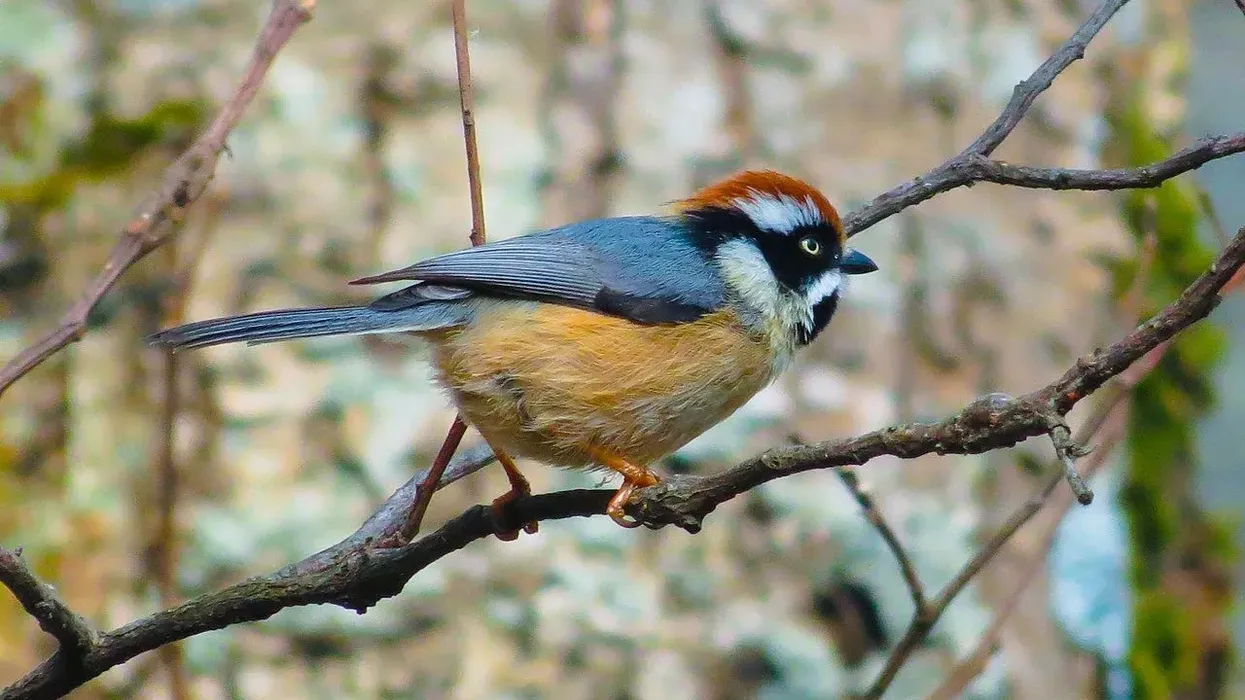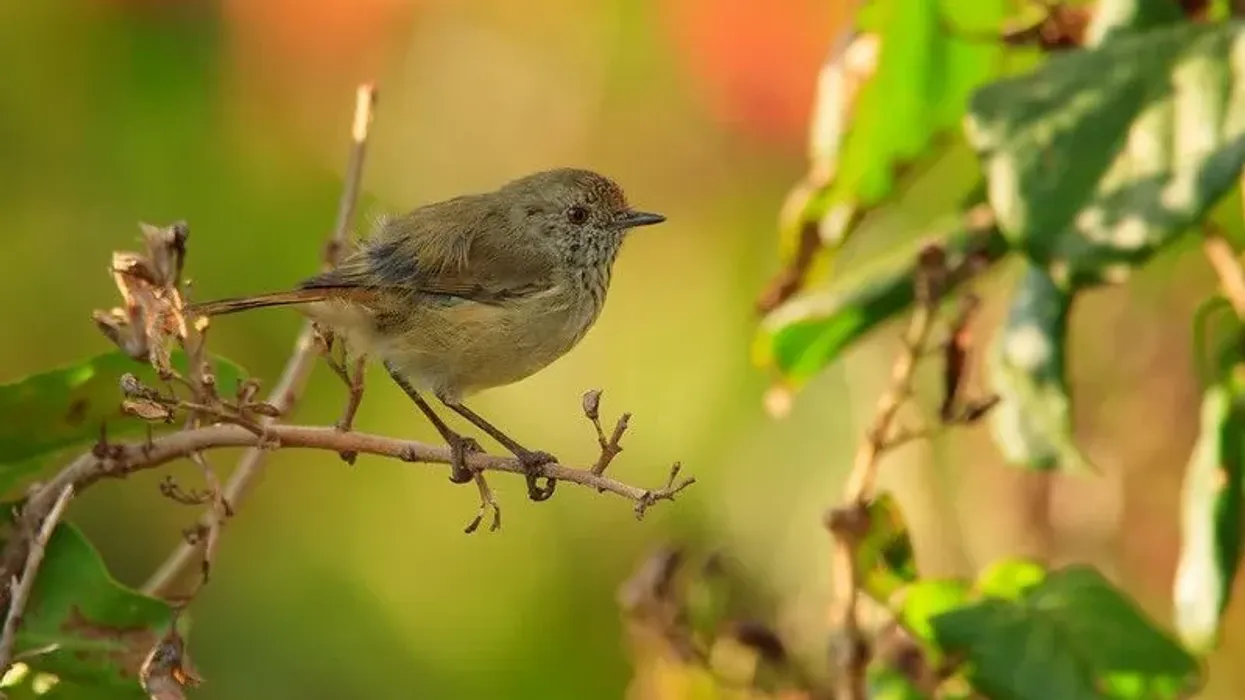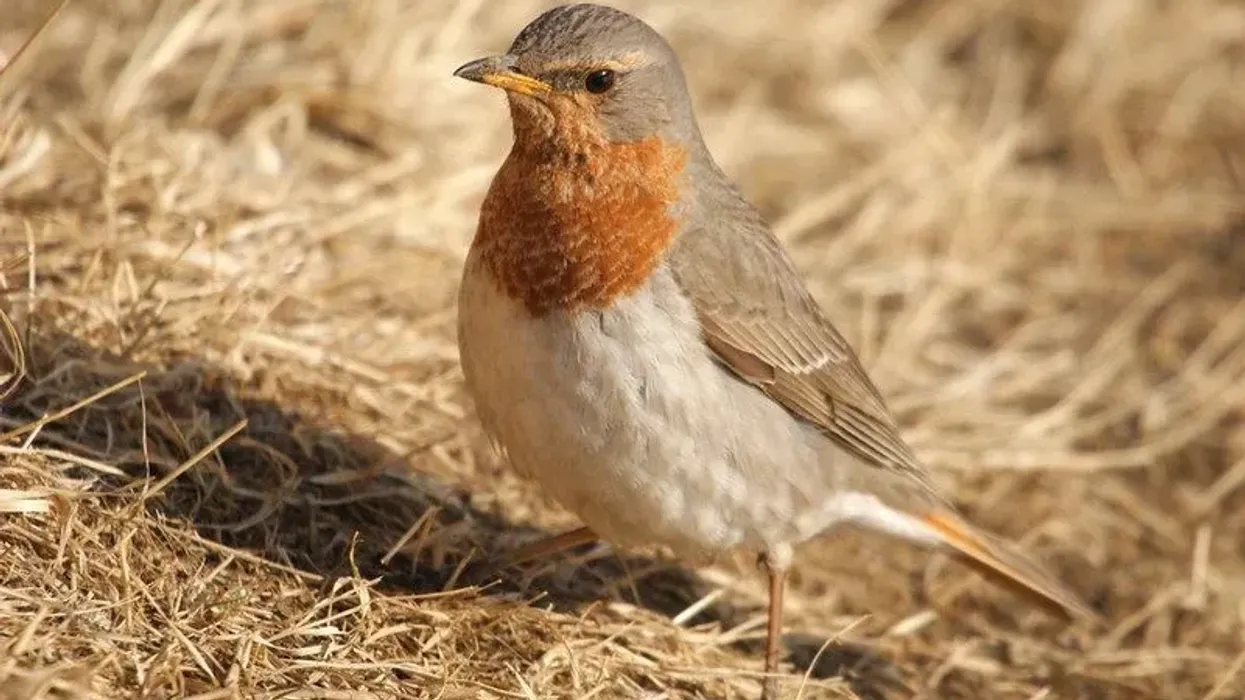Black-throated bushtits (Aegithalos concinnus) are tiny passerine birds found widespread in Asia's eastern and southern parts. These birds with bold patterns on the plumage and stunning colors belong to the family Aegithalidae. Along with almost half the world’s bird species, black-throated tits also come under the order Passeriformes.
There are six recognized subspecies of Aegithalos concinnus, namely, A. c. iredalai, A. c. talifuensis, A. c. manipurensis, A. c. annamensis, A. c. pulchellus, and A. c. concinnus. The subspecies Talifuensis, manipurensis, Concinnus, and Pulchllus belong to the nominate group and have a chestnut cap.
There is considerable variation in their plumage geographically. These birds can be found in north eastern India, north eastern Bangladesh, Nepal, Bhutan, northern Myanmar, Vietnam, Laos, Cambodia, Thailand, and along the Yellow River. They live in broadleaf forest, pine forest generally occurring in middle altitudes.
Even though both sexes look similar, females are smaller and lighter than males. They exist in small groups year-round and sometimes join mixed-species feeding flocks. They don't migrate usually, sometimes they indulge in seasonal migration but mostly they are captive to the space of their origin. The group numbers increases during the breeding season.
Keep on reading for more fascinating facts about this animal. You can also read our articles on great tit and common merganser facts too!
Black-Throated Bushtit Interesting Facts
What type of animal is a black-throated bushtit?
Black-throated bushtit birds are a type of passerine bird.
What class of animal does a black-throated tit belong to?
These passerine birds with a black throat belong to the class of Aves.
How many black-throated bushtits are there in the world?
A black-throated tit known for its black bandit mask around the eyes are common with a relatively stable population.
Where does a black-throated tit live?
They are widely distributed in the Indochinese region foothills of the Himalayas. They can be found in broadleaf forests or pine forests.
Black-throated bushtits live in middle altitudes in areas such as central, eastern, and southern China up to the Yellow River, north eastern India, north eastern Bangladesh, Nepal, Bhutan, northern Myanmar, Vietnam, Laos, Cambodia, and Thailand. They are also found in wooded or bushy habitats.
What is a black-throated tit's habitat?
They are suited to subtropical and temperate zones and are found in broadleaf forest or pine forest, generally occurring in middle altitudes. They prefer an altitude of 3937-8858 ft (1,200-2,700 m) for breeding.
Who do black-throated bushtits live with?
This bushtit species of birds with their black bandit masks are highly social beings. They are known to travel in large groups of up to 40 to 50 birds. They also join mixed groups or flocks and tolerate intruders. It is also known that the breeding pairs in the flock may stay together for several years.
How long does a black-throated tit live?
These passerine birds are known to live for more than five years, sometimes occurring near the Yellow River in China.
How do they reproduce?
They produce one brood annually and are monogamous. The breeding season occurs between February and May. Their oval-shaped nests are made of moss, lichen, spider webs, etc. A female lays around five to eight eggs per clutch.
Incubation is carried out solely by the females, and it takes around 13 to 14 days. The young ones are fed insects and spiders by both parents, and they become ready to fledge in around 16 to 17 days.
Like many other bushtit species of bird, they sometimes display cooperative breeding behavior. The parents may be provided help by one or two helpers, usually failed breeder males that are related to raise the young ones.
What is their conservation status?
According to the International Union for Conservation of Nature (IUCN), these birds are listed under Least Concern status. They are common and widespread with a relatively stable population. Even though habitat loss is a potential threat, as it is to birds in general, they are under no immediate threat.
Black-Throated Bushtit Fun Facts
What do black-throated bushtits look like?
This widespread bird species has bold patterns with considerable variations in the plumage depending on the geographic variations. A black throat, a medium-length tail, and a black bandit mask around the eyes are common physical features shown by all subspecies.
The Iredalai, Talifuensis, and Manipurensis subspecies have a reddish-brown crown, while the Annamensis and Pulchellus subspecies have a gray crown. The Iredalai has a small whitish supercilium, while the Annamensis has no whitish supercilium. The Concinnus subspecies have a chestnut cap, chestnut flanks, and a chestnut lower breast band.
Both sexes are similar and have pale yellow irises. Juveniles have a paler plumage.
How cute are they?
These boldly patterned cute little birds look stern yet are adorable. With their vivid plumage and tiny size, they fit the description of pretty and cute.
How do they communicate?
They do not have a territorial song. They have high-pitched contact calls, trills, sputters, or chip vocalizations. Minor differences occur among the subspecies.
The functions of all the different sounds are not known. Even though these birds are difficult to spot due to their small size, their vocalizations are loud enough to draw attention to them. Sputters and chips are given by alarmed birds, suggesting that they may be alarm calls or warning signals.
How big are they?
A black-throated bushtit bird has an average body length of 3.4-4.5 in (8.8-11.5 cm) and a wing length of 1.7-2.1 in (4.5-5.4 cm). They are about one-third the size of an American robin.
How fast can they fly?
The speeds up to which a black-throated tit can fly ha not been estimated yet.
How much does a black-throated tit weigh?
An average black-throated tit bird weighs around 0.1-0.3 oz (4-9 g).
What are their male and female names of the species?
There are no distinct names for males and females. A bird of this species, whether male or female, is commonly known as a black-throated bushtit (Aegithalos concinnus). There is no specific name for a group of bushtits either.
What would you call a baby black-throated bushtit?
A young baby black-throated tit bird of this species can be referred to as a chick, nestling, or fledgling.
What do they eat?
They primarily feed on insects and spiders. They also consume seeds, fruits, and berries, especially raspberries. The nestlings are fed spiders by both the parents or helpers in case of cooperative breeding.
Are they dangerous?
No, they are not dangerous. Bushtits are friendlier than most birds.
Would they make a good pet?
Since they predominantly feed on insects, it is difficult to attract them to your yard. Planting native shrubs or trees might help in attracting them. If kept as pets, extra care should be given to provide them with ample space, especially since they will be away from their natural habitat for a while.
Did you know...
Even though both breeding adults and fledglings are known to disperse and undertake altitudinal movements with changing seasons, they are mostly resident birds.
How many eggs do they lay?
The average clutch size is five to eight eggs. The eggs are white or pale pink in color with fine red spots. They are around 0.5-0.6 in (1.3-1.4 cm) in length and 0.4 in (1 cm) in width.
How to recognise a black-throated bushtit bird?
Due to their small size, their calls are an easy way to locate them. They can be identified using their bold markings which include a black throat, white chin, a medium-length tail, and a black bandit mask around the eyes.
Here at Kidadl, we have carefully created lots of interesting family-friendly animal facts for everyone to discover! Learn more about some other birds including common nighthawk, or palm warbler.
You can even occupy yourself at home by coloring in one of our free printable bird of paradise coloring pages.









